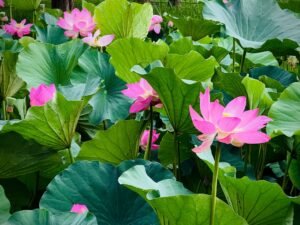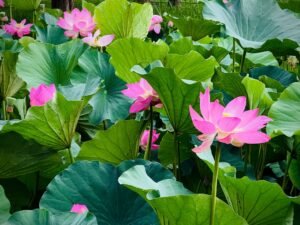

Exploring Norway’s Stunning Fjords with a Geordie Twist
Norway’s fjords are a natural wonder that captivates visitors from around the world. Fjords are narrow, deep inlets of the sea that are surrounded by towering cliffs and steep mountains. These geological formations were created by glaciers during the last ice age, and today they are one of Norway’s most iconic features.
Norway is home to some of the most breathtaking fjords in the world, including the famous Geirangerfjord, Nærøyfjord, and Sognefjord. These fjords offer stunning views of cascading waterfalls, lush green valleys, and snow-capped peaks. The beauty of Norway’s fjords is truly unparalleled, and it is no wonder that they have become a must-visit destination for nature lovers and adventure seekers.
Table of Contents
ToggleThe Geordie Twist: A Unique Perspective on Norway’s Fjords
Geordie culture, which originates from the North East of England, has a unique connection to Norway’s fjords. The Geordie dialect shares similarities with the Norwegian language, and there is a strong historical and cultural link between the two regions. Many Geordies have Norwegian ancestry and feel a sense of kinship with Norway.
For Geordies, visiting Norway’s fjords offers a chance to connect with their heritage and appreciate the natural beauty that their ancestors may have experienced. Geordies can also bring their own unique perspective to their visit, as they understand the importance of community and the value of preserving nature.
Tracing the History of Norway’s Fjords: From Glaciers to Tourist Attractions
Norway’s fjords were formed over millions of years by glaciers carving through the landscape. During the last ice age, massive glaciers covered much of Scandinavia, including what is now Norway. As these glaciers retreated, they left behind deep valleys that were filled with seawater, creating the fjords we see today.
Fjords have played a significant role in Norway’s history. They provided natural transportation routes for early settlers and served as important fishing grounds. Fjord communities developed along the shores, and today they still maintain a strong connection to the sea and their maritime heritage.
In recent years, Norway’s fjords have become popular tourist attractions. The unique beauty of these natural formations draws visitors from all over the world. Tourism has brought economic opportunities to fjord communities, but it has also posed challenges in terms of preserving the fragile ecosystem and maintaining a balance between tourism and local life.
Getting There: How to Reach Norway’s Fjords from the UK
There are several transportation options for travellers from the UK to reach Norway’s fjords. The most common way is by air, with direct flights available from major UK airports to cities such as Oslo, Bergen, and Stavanger. From there, travellers can take domestic flights or trains to reach fjord communities.
Another option is to take a ferry or cruise ship from the UK to Norway. This allows travellers to enjoy a scenic journey through the North Sea and experience the beauty of the fjords from the water. There are also options for driving or taking a train through Europe and crossing into Norway by land.
When booking flights and accommodations, it is recommended to plan in advance, especially during peak tourist seasons. Prices can vary depending on the time of year, so it is advisable to compare different options and book early to secure the best deals.
UK travellers do not need a visa to visit Norway for tourism purposes. However, it is important to ensure that your passport is valid for at least six months beyond your planned departure date. It is also recommended to have travel insurance that covers medical expenses and any potential travel disruptions.
The Best Time to Visit Norway’s Fjords: Seasonal Highlights and Considerations
The best time to visit Norway’s fjords depends on personal preferences and the activities you wish to engage in. Each season offers unique highlights and considerations.
Summer, from June to August, is the peak tourist season in Norway. The weather is generally mild, with long daylight hours and temperatures ranging from 15 to 25 degrees Celsius. This is the best time for outdoor activities such as hiking, kayaking, and cruising. However, it is also the busiest time, with larger crowds and higher prices.
Autumn, from September to November, offers stunning fall foliage and fewer tourists. The weather can be unpredictable, with cooler temperatures and occasional rain. This is a great time for hiking and photography, as the landscapes are painted in vibrant colours. It is also a good time to experience local festivals and cultural events.
Winter, from December to February, brings snow-covered landscapes and the opportunity for winter sports such as skiing and snowboarding. The fjords take on a magical appearance, with frozen waterfalls and ice formations. However, the weather can be harsh, with temperatures dropping below freezing. It is important to dress warmly and be prepared for winter conditions.
Spring, from March to May, is a transitional season with milder temperatures and longer daylight hours. This is a great time for hiking and wildlife spotting, as many animals come out of hibernation. It is also a quieter time for tourism, with lower prices and fewer crowds.
A Guide to the Top Fjords in Norway: Must-See Destinations for Geordie Travellers
Norway is home to numerous fjords, each with its own unique characteristics and attractions. Here are some of the top fjords that Geordie travellers should consider visiting:
1. Geirangerfjord: Located in western Norway, Geirangerfjord is one of the most famous fjords in the country. It is known for its dramatic landscapes, including the Seven Sisters waterfall and the Eagle Road viewpoint. Geordie travellers will appreciate the stunning beauty of this fjord and its connection to their own heritage.
2. Nærøyfjord: This UNESCO World Heritage site is located in western Norway and is known for its narrow width and steep cliffs. It offers breathtaking views of cascading waterfalls and picturesque villages. Geordie travellers will enjoy the serenity and tranquillity of this fjord, as well as the opportunity to explore the surrounding hiking trails.
3. Sognefjord: As the longest and deepest fjord in Norway, Sognefjord is a must-see destination for any traveller. It stretches over 200 kilometres and offers a variety of activities, including hiking, fishing, and kayaking. Geordie travellers will appreciate the grandeur of this fjord and its connection to Norwegian history and culture.
Activities and Attractions in Norway’s Fjords: Hiking, Cruising, and More
Norway’s fjords offer a wide range of activities and attractions for visitors to enjoy. Outdoor enthusiasts will find plenty of opportunities for hiking, with numerous trails that offer stunning views of the fjords and surrounding landscapes. Popular hiking routes include Trolltunga, Preikestolen (Pulpit Rock), and the Romsdalseggen Ridge.
Water-based activities are also popular in the fjords, with options for cruising, kayaking, and fishing. Cruises allow visitors to experience the fjords from a different perspective, with guided tours that provide insights into the history and geology of the area. Kayaking offers a more intimate experience, allowing travellers to explore hidden coves and get up close to waterfalls.
For those interested in cultural attractions, fjord communities offer a glimpse into traditional Norwegian life. Visitors can explore charming villages, visit historic churches, and learn about local customs and traditions. There are also opportunities to sample traditional Norwegian cuisine, including fresh seafood and regional specialties.
Exploring Local Culture: Immersing Yourself in Norway’s Fjord Communities
Fjord communities in Norway have a unique culture that is shaped by their close connection to the sea and the natural environment. These communities are often small and close-knit, with a strong sense of community and a focus on preserving their heritage.
When visiting fjord communities, it is important to respect the local customs and traditions. Norwegians value privacy and personal space, so it is advisable to avoid intrusive questions or behaviours. It is also customary to remove your shoes when entering someone’s home or certain public spaces.
Geordie travellers can immerse themselves in the local culture by participating in community events and activities. This could include attending a traditional music concert, joining a local fishing excursion, or visiting a local market. By engaging with the local community, Geordie travellers can gain a deeper understanding of Norwegian culture and forge connections with the people who call the fjords home.
Accommodation and Dining in Norway’s Fjords: Finding the Best Options for Your Budget
Fjord communities offer a range of accommodation options to suit different budgets and preferences. There are luxury hotels and resorts that provide all-inclusive packages and stunning views of the fjords. These options are ideal for travellers who want to indulge in comfort and convenience.
For those on a budget, there are also guesthouses, bed and breakfasts, and camping sites available. These options provide a more affordable way to experience the fjords while still enjoying comfortable accommodations. Camping is a popular choice for outdoor enthusiasts, as it allows them to be closer to nature and explore the surrounding landscapes.
When it comes to dining, fjord communities offer a variety of options that showcase the best of Norwegian cuisine. Seafood is a highlight, with fresh fish, shrimp, and shellfish being popular choices. Traditional dishes such as lutefisk (dried fish) and rakfisk (fermented fish) can also be found in some areas.
For those who prefer international cuisine, there are also restaurants that offer a range of options, including Italian, Asian, and American dishes. Geordie travellers may appreciate the opportunity to try Norwegian twists on familiar dishes, such as reindeer pizza or salmon sushi.
Tips and Tricks for a Memorable Fjord Adventure: Advice from Geordie Travellers
Geordie travellers who have visited Norway’s fjords have shared their tips and tricks for making the most of the experience. Here are some recommendations from those who have been there:
1. Pack for all weather conditions: Norway’s weather can be unpredictable, so it is important to pack layers and be prepared for changing conditions. Bring waterproof clothing, sturdy hiking shoes, and warm layers to stay comfortable in any situation.
2. Budget for expenses: Norway is known for being an expensive destination, so it is important to budget accordingly. Consider cooking some meals yourself or opting for budget-friendly dining options to save money. It is also advisable to book accommodations and activities in advance to secure the best prices.
3. Plan for off-peak seasons: While summer is the most popular time to visit Norway’s fjords, off-peak seasons offer their own unique charm. Consider visiting in spring or autumn to enjoy quieter trails and lower prices. Just be prepared for cooler temperatures and potential rain.
4. Respect nature and wildlife: Norway’s fjords are home to a diverse range of flora and fauna, so it is important to respect the environment and wildlife. Follow designated trails, avoid littering, and keep a safe distance from animals. Remember that you are a guest in their natural habitat.
5. Embrace the slower pace: Fjord communities have a slower pace of life, and it is important to embrace this when visiting. Take the time to relax, enjoy the scenery, and connect with the local community. Slow down and appreciate the beauty of nature that surrounds you.
In conclusion, Norway’s fjords are a natural wonder that offers a unique and unforgettable experience for Geordie travellers. From the stunning landscapes to the rich cultural heritage, there is something for everyone to enjoy. By planning ahead, respecting the local customs, and embracing the natural beauty, Geordie travellers can create memories that will last a lifetime. So pack your bags and get ready to embark on a fjord adventure like no other.
Looking to expand your vocabulary in Norwegian? Check out this article on Norwegian Geordie Words. It’s a fascinating exploration of the unique words and phrases used in the Norwegian dialect spoken in the Geordie region. From everyday expressions to slang, this article covers it all. Whether you’re a language enthusiast or planning a trip to Norway, this article will give you a deeper understanding of the local language. Read more
If you want to learn Norwegian, you can register for classes here. We look forward to hearing from you and helping you become fluent in Norwegian.





